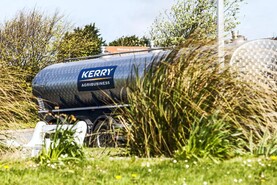The response to the stamp duty issue identified by the Irish Farmers Journal last week exposes a worrying level of arrogance towards farmers by both ministers and Government departments.
It was clear from an early stage that the impact on farmers of the decision in last week’s budget to increase stamp duty on commercial property from 2% to 6% had not been fully assessed. There is no doubt that when Minister for Agriculture Michael Creed sat down to brief media on the areas of the budget relating to agriculture, he was fully confident the transfer of agricultural land was exempt from the hike in stamp duty. He didn’t leave any wriggle room when he said: “We need to nail this one ... the increase in stamp duty does not apply to agricultural land.”
It is legitimate for farmers to ask from whom Minister Creed received this advice. Given his choice of words he had obviously been reassured in the strongest possible terms, presumably by his Department officials, that he was on solid ground. Furthermore, why, if his officials were aware what the minister was saying was wrong, did they not seek to clarify the position.
It appears that the Department of Agriculture was either caught flat-footed on this issue and never joined the dots between commercial property and the transfer of agricultural land, or the relationship between the Department of Finance and the Department of Agriculture has totally disintegrated. Regardless of who is to blame, the mistake could cost farmers up to €30m per annum.
Perhaps the most disappointing aspect has been the Government’s response. On Tuesday evening, the Government had two choices – either treat farmers with the respect they deserve, accept that an error had been made and work to resolve it, or alternatively try to manage the fallout by focusing attention on the exemptions that are in place. These include young qualified farmer relief and consanguinity relief (this is relief on the transfer of land to a close family member).
In the Dáil on the evening of the Budget it was clear the decision had been taken to try to manage the fallout, with the narrative shifting towards how Minister Creed had secured an extension of the relief measures. However, at the same time Minister for Education and Skills Richard Bruton made clear that transfer of agricultural land that fell outside these relief measures would be charged at the increased rate of 6%. It was a far cry from the reassurance given by Minister Creed to farmers just a few hours previously.
The following day, in an interview with the Irish Farmers Journal, Minister Creed struck a defiant tone, defending his position on the basis that the vast majority of land transfers were accounted for under young qualified farmer relief or consanguinity relief.
Ill-informed
Again, the minister appears to have been ill-informed. Irish Farmers Journal analysis of Revenue figures revealed that only one-third of all land sales in 2016 qualified for a relief from stamp duty. Once again, it raises questions as to the level of analysis being carried out by the Department in relation to these key issues and the substance behind the minister’s comments.
Clearly farmers need to take a stand on this issue. Not solely on the basis that a tripling of stamp duty on the transfer of agricultural land will put further pressure on active farmers already struggling to cope with the fallout of Brexit and reduced CAP payments, but also to send a signal to Government that they will not tolerate simply being viewed as collateral damage from poorly formed policy measures.
Age limit
As we go to press, we hear the Cabinet has agreed to remove the upper age limit on consanguinity relief of 67 years. This means transfers from farmers over this age will no longer have to pay stamp duty at the higher rate of 6%.
While removal of the upper age limit will be seen as a retrograde step by some, as it almost praises late-in-life transfer of land, it will undoubtedly relieve the cost pressure on the stamp duty bombshell announced last week. Still, it does not go far enough.
The IFA proposal that land purchased or transferred and used for farming to remain at the 2% stamp duty rate remains both credible and equitable. Tinkering around the edges with specific ages (or indeed removing the upper age limit completely) only clouds what should be best policy of seemlessly transferring land at no additional cost to a younger generation early in a farming career.






 This is a subscriber-only article
This is a subscriber-only article










SHARING OPTIONS: